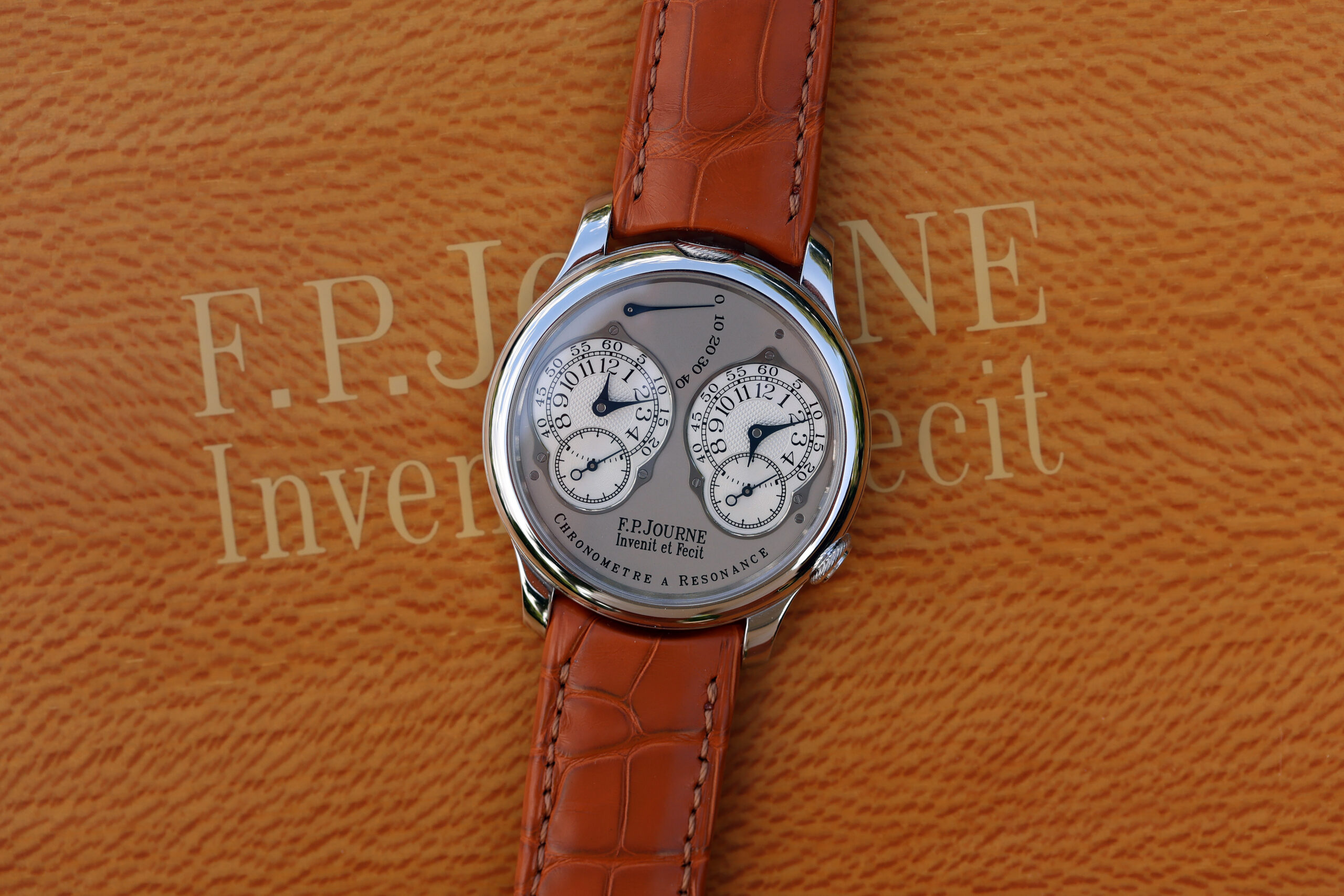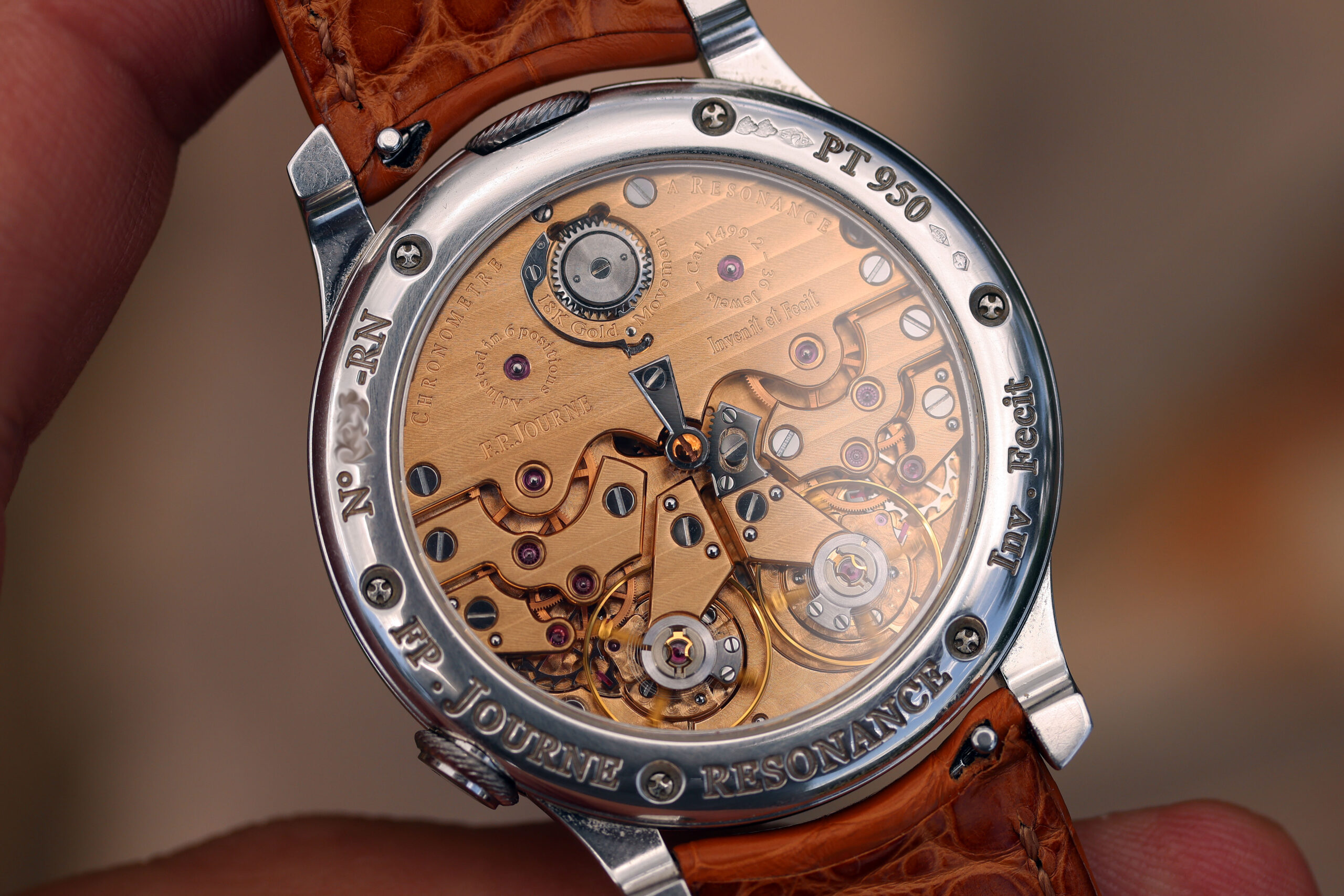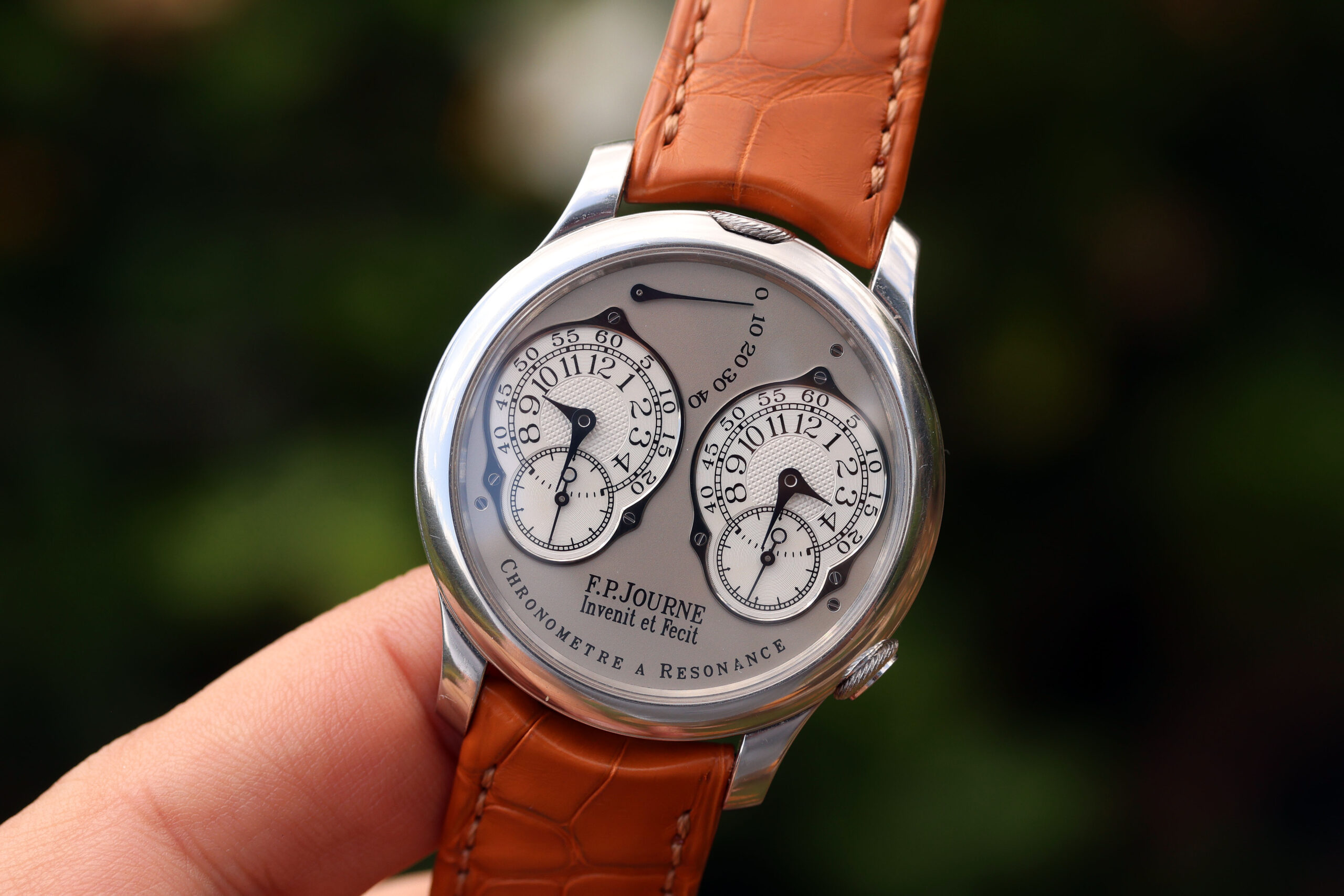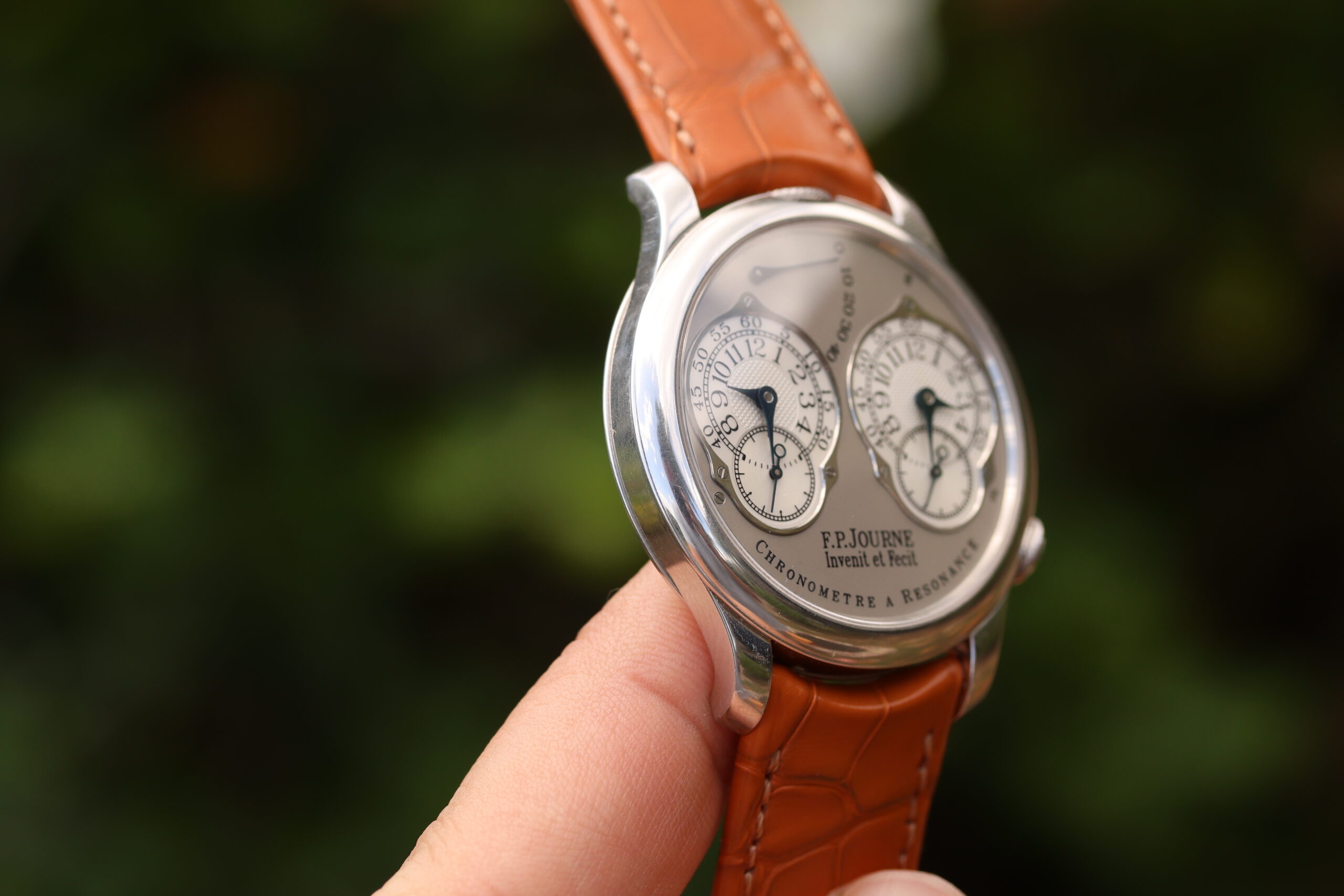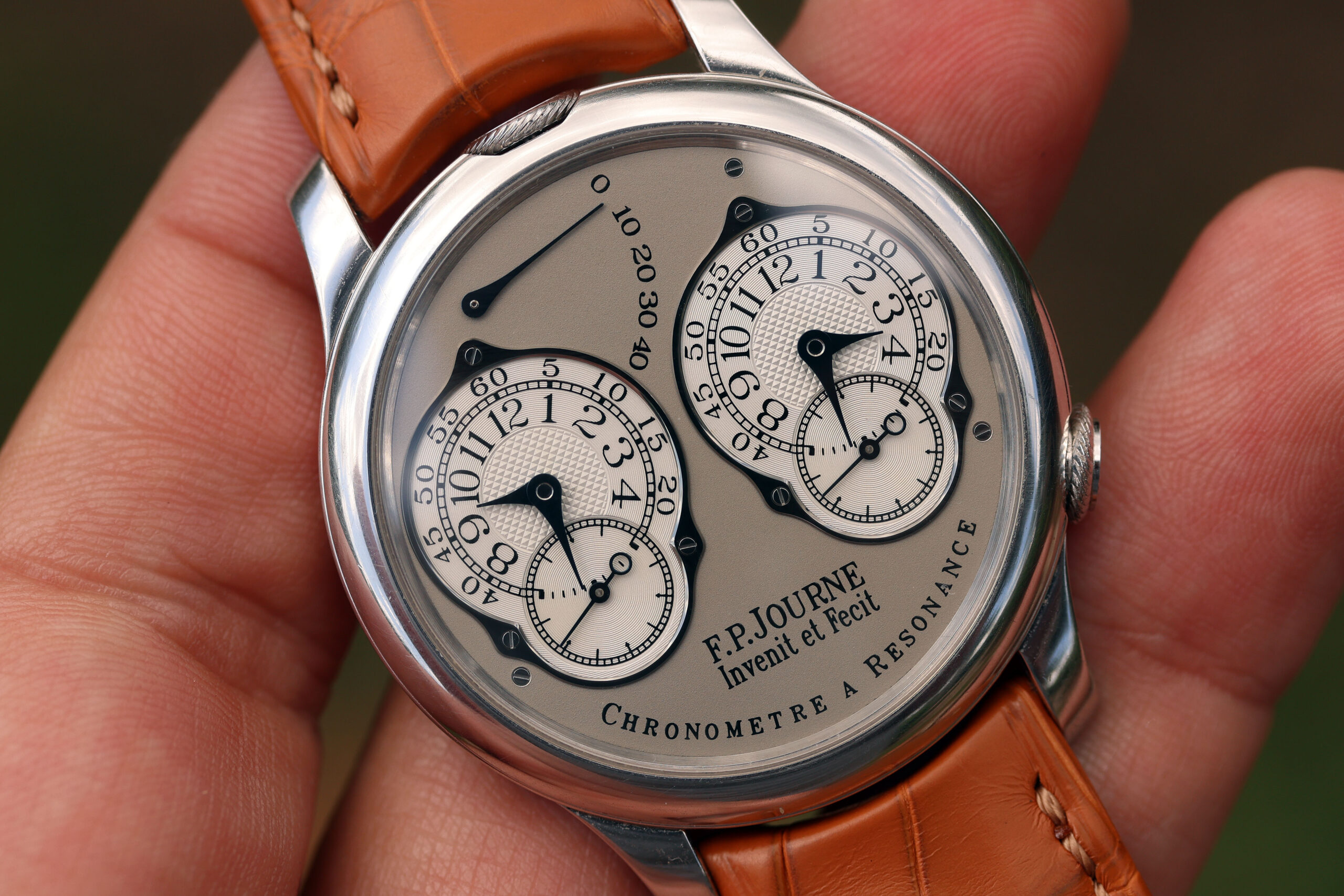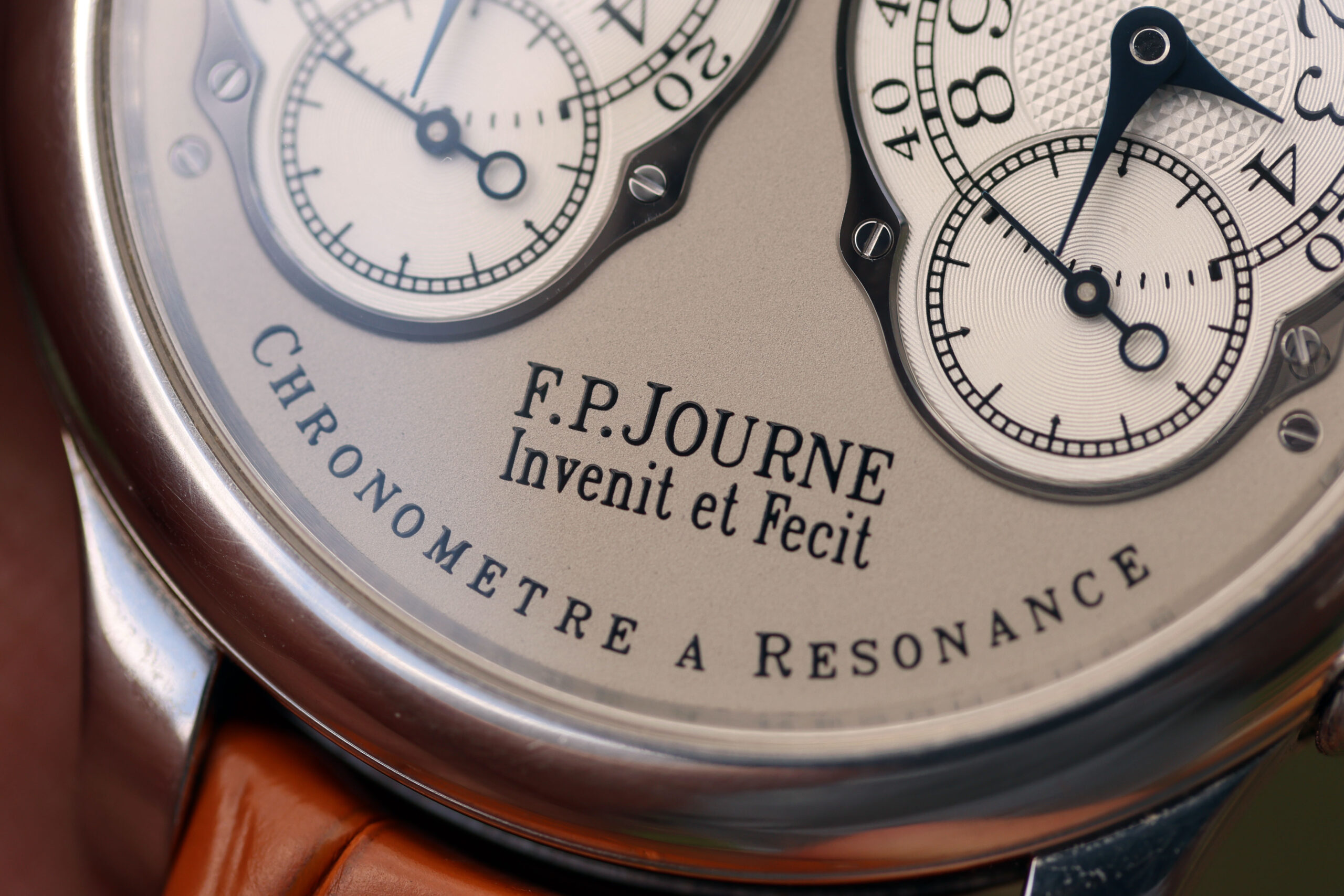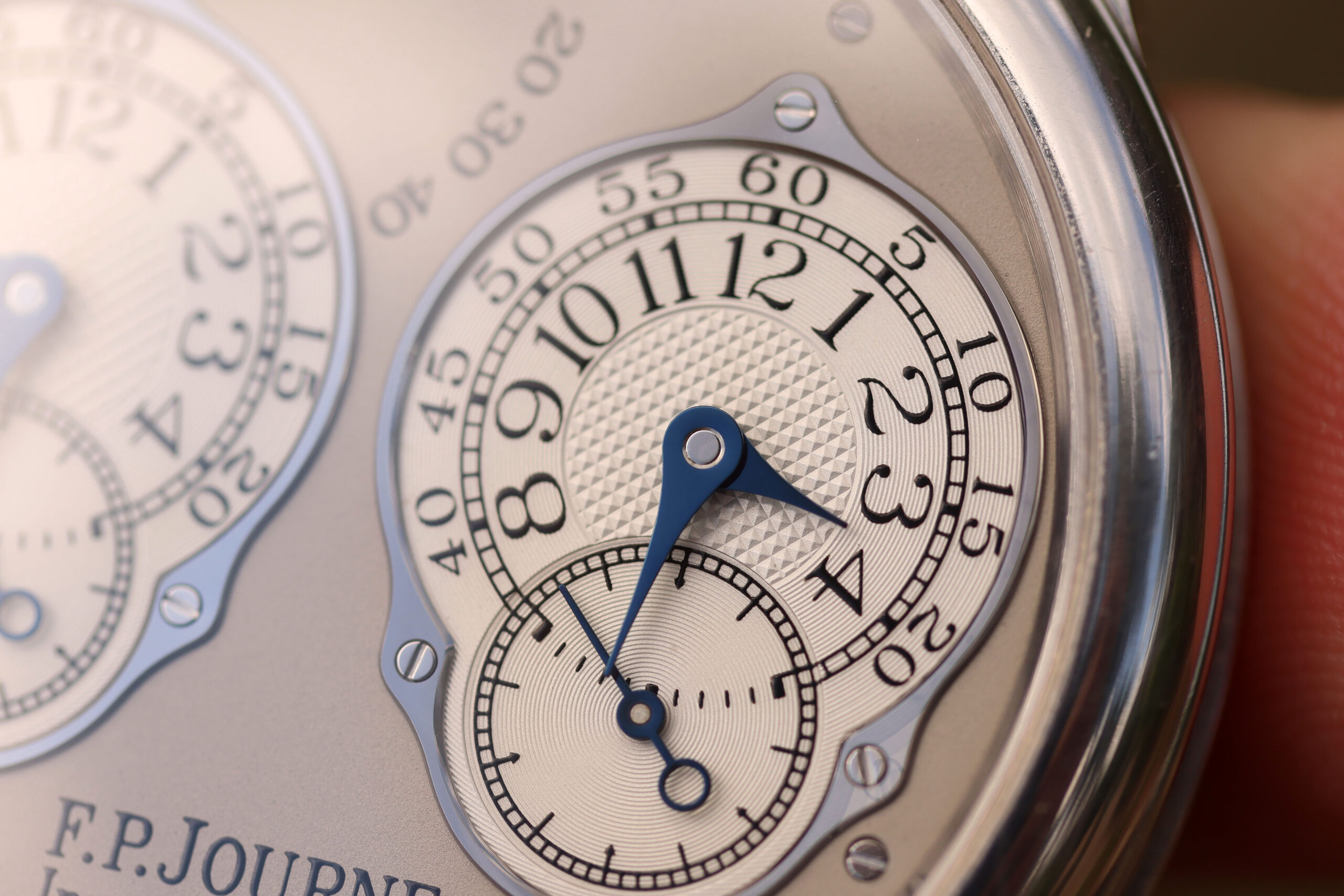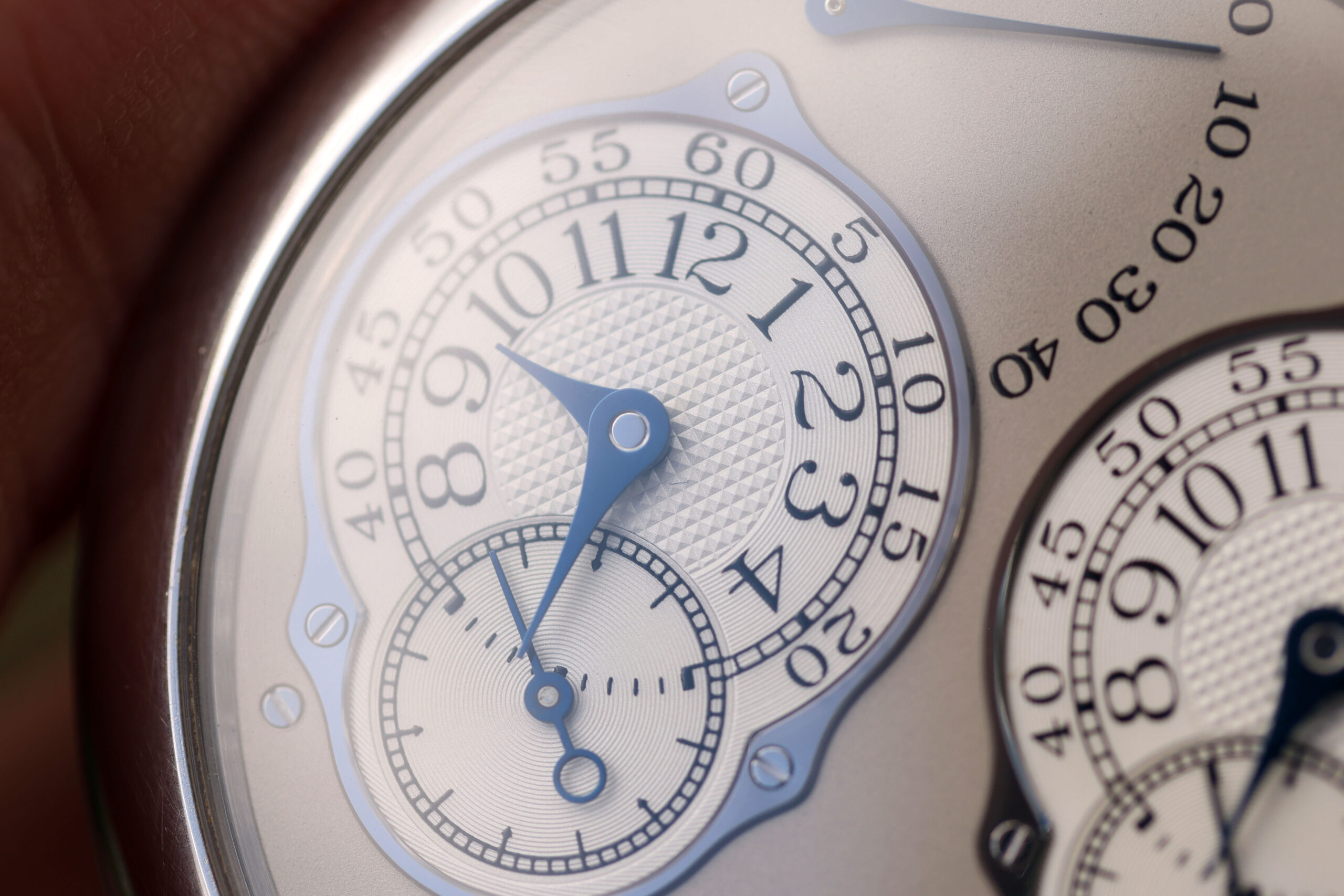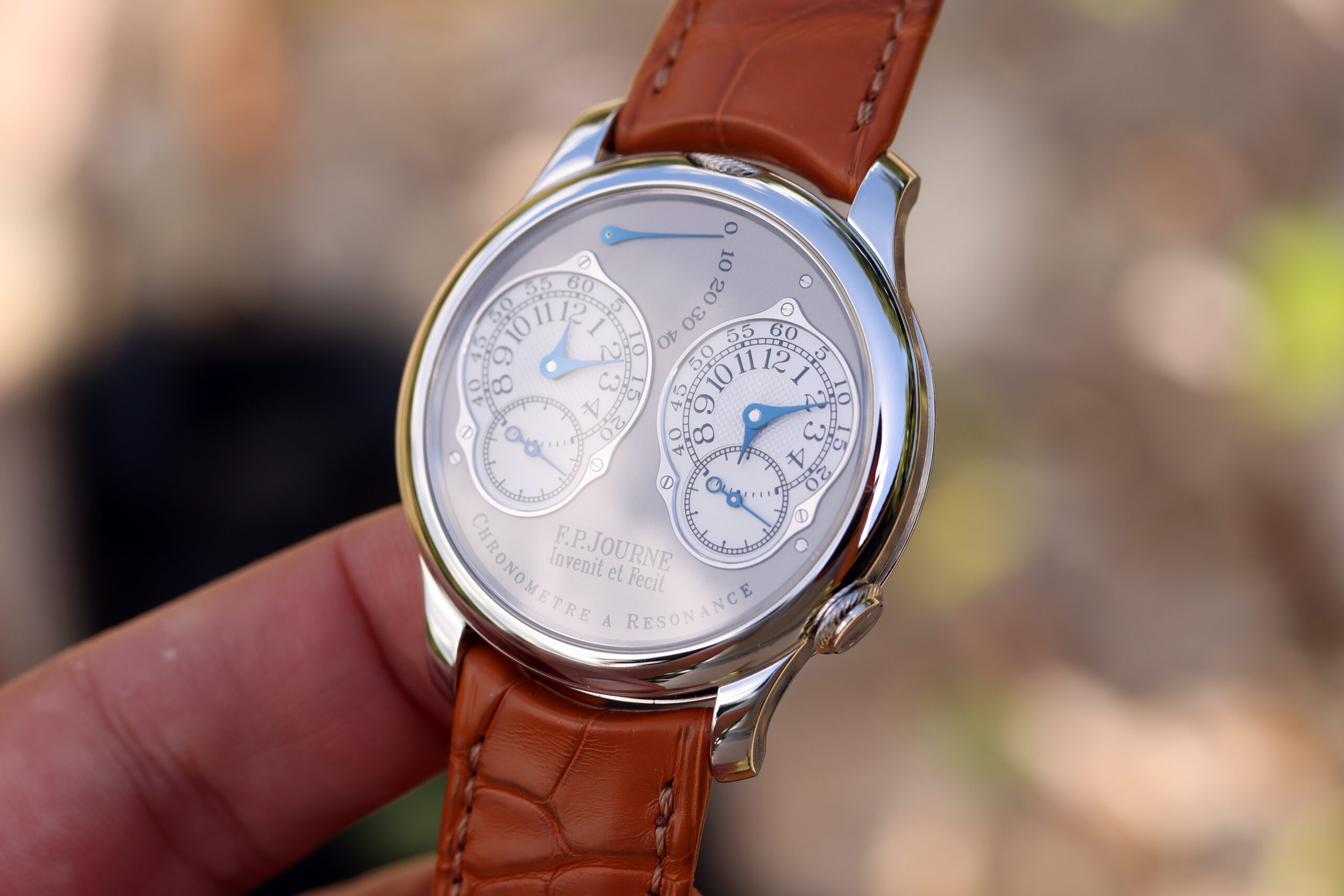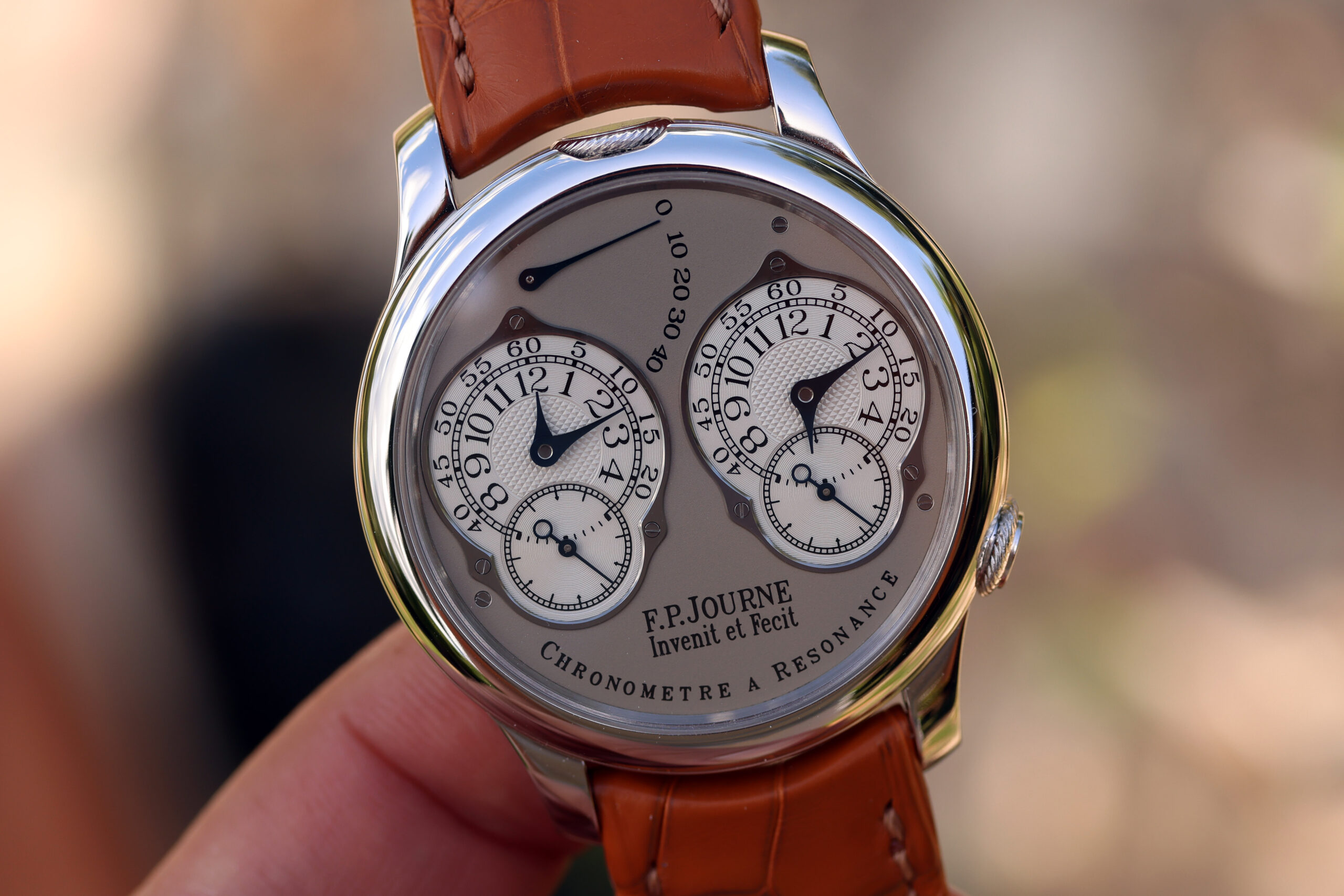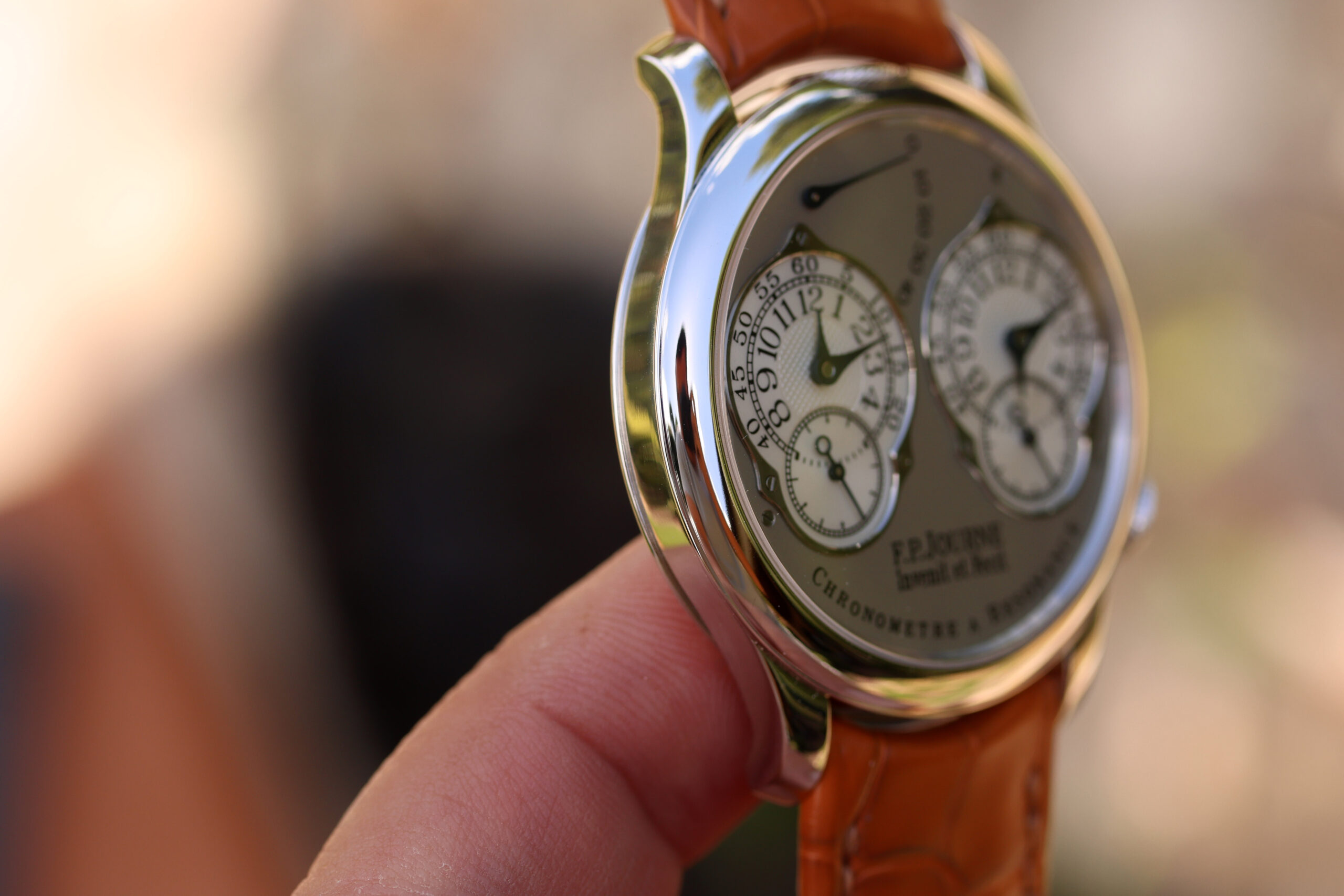2007 F.P. Journe Chronometre a Resonance “RN” In Platinum 40mm
Views: 454
-
PLEASE NOTE! If you are using PayPal/Credit Card as a form of payment, we cannot refund the processing fee of 3% if you decide to return the watch. New PayPal policy states that they will no longer refund the fee they take from us even if the watch is returned and transaction is reversed. Again, if you pay by PayPal or Credit Card (which is processed by PayPal) and decide to return the watch, you will be getting a refund in amount 3% less than what you originally pay.
Up for grabs is an F.P. Journe Resonance
“RN” reference, which was the second generation of FPJ Resonance made between 2004 and 2010 and featuring Caliber 1499.3 movement in 18k red gold
The current variant comes in a classic combo with 40mm platinum case and white gold (gray) dial.
The watch is in excellent used condition without any dings or dents or deep scratches.
The dial is very attractive, damage-free with beautiful matte gray color and silver subdials with guilloche.
The back of the watch is even more impressive with Cal. 1499.3 displayed in all of its glory.
This watch comes on an unworn genuine FPJ strap with platinum FPJ buckle.
Original box set, original sales receipt from 2007, the store’s warranty card, and a FPJ service receipt form 2016 are all included as well.
For those unfamiliar with FPJ Resonance, please have a read:
What is actually the resonance phenomenon?
Two frequencies which harmonize!
François-Paul Journe pays tribute to the research conducted on resonance by the great 18th century watchmakers, with the presentation of the first wristwatch resonance chronometer.
In 1983, François-Paul Journe took up the challenge with a first creation in the form of a pocket-watch, which did not yet perform according to his expectations. It would take fifteen more years of work for the watchmaker to gain the maturity and the experience to enable him to present an exclusive world première, the first resonance wristwatch.
He devised, developed and built this movement to meet the demands of actual wear on the wrist and thereby provide chronometric performance driven to extremes. Each of the two balances alternately serves as exciter and resonator. When the two balances are in motion, they enter into sympathy due to the effect of the resonance and begin naturally beating in opposition. The two balances thus rest against each other, giving more inertia to their movement.
Nonetheless, this harmony is possible only if the difference in frequency between them does not exceed five seconds per day of cumulated difference in six situations. Adjusting them is an extremely delicate task.
Whereas an external disturbing movement affects the running of a traditional mechanical watch, this same disturbance, in the case of a resonance watches, produces an effect that accelerates one of the balances as much as it slows the other down. Little by little, the two balances come back towards each other to find their point of harmony, thus eliminating the disturbance. This innovative chronometer offers a level of precision that is unequalled in the field of the mechanical watch.
First unveiled in the year 2000, this watch represents one of the wildest challenges ever in the field of the mechanical watch ! The first applications of the resonance phenomenon in horological science dates back to the 18th century, with watchmakers such as Antide Janvier (†1840) and Abraham-Louis Breguet (†1823).
They observed the negative effects of these waves on clocks and then conducted in their own way, research into ways of using this phenomenon in the operating of regulators.
Credit FPJ’s official site.

